Features of geotextile for rubble and its laying

Features of geotextiles for rubble and its laying are very important points for arranging any garden plot, local area (and not only). It is necessary to clearly understand why you need to lay it between sand and gravel. It is also worth figuring out which geotextile is best used for garden paths.
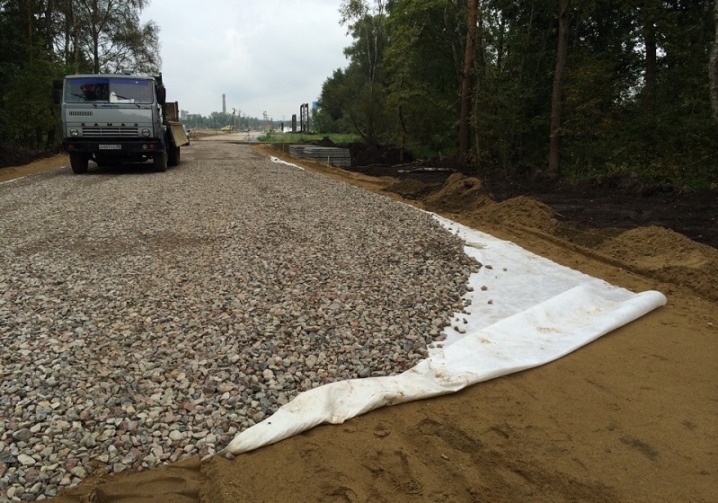
What is it and what is it for?
They have been trying to lay geotextiles under rubble for a very long time. And this technological solution fully justifies itself in most cases. It is difficult even to imagine a situation when it would not fit. Geotextile is one of the varieties of the so-called geosynthetic canvas. It can be obtained by both woven and non-woven methods.
Load per 1 sq. m can reach 1000 kilonewtons. This indicator is quite enough to ensure the required design characteristics. Laying geotextiles under crushed stone is appropriate on a variety of construction sites, including the construction of houses, paved paths. Geotextiles for roads for various purposes are widely used. Its main functions:
- increasing the overall bearing capacity;
- reduction of project implementation costs;
- increasing the strength of the supporting layer of the soil.
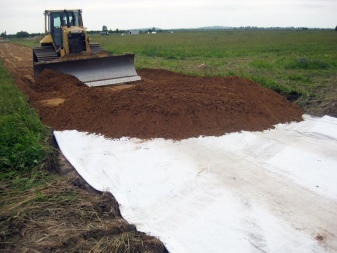
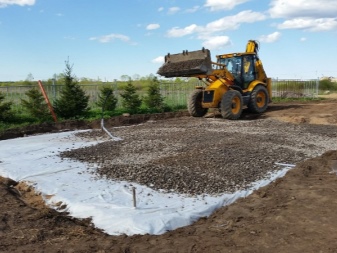
With the current level of technology, it is impossible to find alternatives to geological textiles for the entire sum of their characteristics. Such material has proved itself to be excellent in domestic practice, where the number of problem soils is extremely large. The most important function of geotextiles is the prevention of frost heaving. It has been established that the correct use of this material can increase the service life of the roadway by 150% while reducing the cost of building materials.
At home, geotextiles are usually placed between sand and gravel in order to exclude the germination of weeds.


Description of species
Non-woven type of geotextile is made on the basis of polypropylene or polyester fibers. Occasionally, they are mixed with threads produced from natural raw materials. Geofabric is made simply by weaving threads. Occasionally there is also a knitted material, the so-called geotricot, its wide distribution is hindered by the complexity of the technology used. For your information: non-woven polypropylene produced in Russia, processed by needle-punching technique, has the commercial name "dornit", it can be safely placed under the rubble.
For the production of geological textiles, in addition to polypropylene, they can use:
- polyester;
- aramid fiber;
- various types of polyethylene;
- glass fiber;
- basalt fiber.
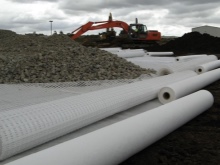
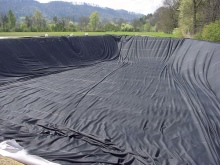
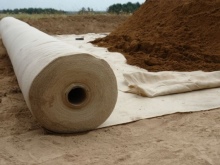
Selection Tips
In terms of strength, polypropylene stands out favorably. It is extremely resistant to adverse environmental factors and is able to withstand powerful loads. It is also very important to choose the density. Material with a specific gravity of 0.02 to 0.03 kg per 1 m2 is unsuitable for laying under gravel. Its main field of application is the prevention of pecking of seeds by birds, a coating from 0.04 to 0.06 kg is also in demand mainly in horticulture and horticulture.
For a garden path, a coating of 0.1 kg per 1 m2 can be applied. It is also used as a geomembrane filter. And if the density of the material is from 0.25 kg per 1 m2, then it can be useful for arranging a passenger road. If the filtering parameters of the web are in the foreground, the needle-punched option should be chosen.
The use of the canvas depends on what problem you plan to solve.
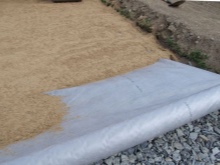
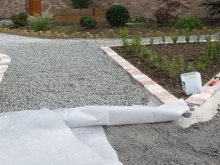
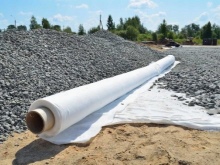
How to stack?
Geotextiles can only be laid on a completely flat surface. Previously, all protrusions and grooves are removed from it. Further:
- gently stretch the canvas itself;
- spread it in a longitudinal or transverse plane over the entire surface;
- attach it to the soil using special anchors;
- level the coating;
- according to the technology, they level, stretch and join with the adjacent canvas;
- do the overlap of the canvas on a large area from 0.3 m;
- attach adjacent fragments by filing end-to-end or heat treatment;
- the selected crushed stone is poured, compacted to the desired degree.
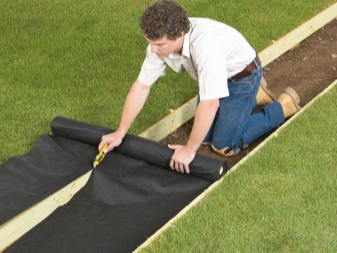
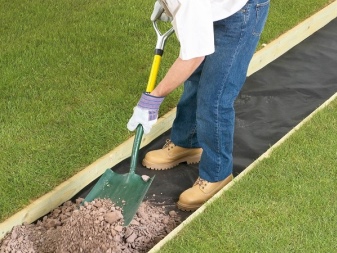
Correctly executed installation is the only guarantee of high-quality protection against adverse factors. Do not leave even a small amount of roots or pebbles in the ground, as well as holes. The standard work sequence assumes that the core is laid on the lower side, and the usual geotextile on the arbitrary side, but it is the same that the rolls must be rolled along the road. If you try to use them for gravel garden paths without rolling out, "waves" and "folds" are almost inevitable. On an ordinary flat surface, the overlap is 100-200 mm, but if it cannot be leveled in any way, then 300-500 mm.
When forming a transverse joint, it is customary to put the next canvases under the previous ones, then nothing will move during the filling process. Dornit strips are joined with the help of anchors in the shape of the letter P. Then they fill in the crushed stone using a bulldozer (in small volumes - manually). The layout is very simple.
However, it is necessary to avoid direct collision with the geotextile, and then carefully level the poured mass and compact it.

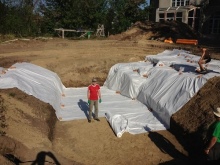
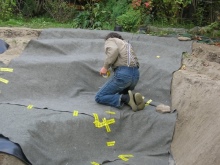













The comment was sent successfully.